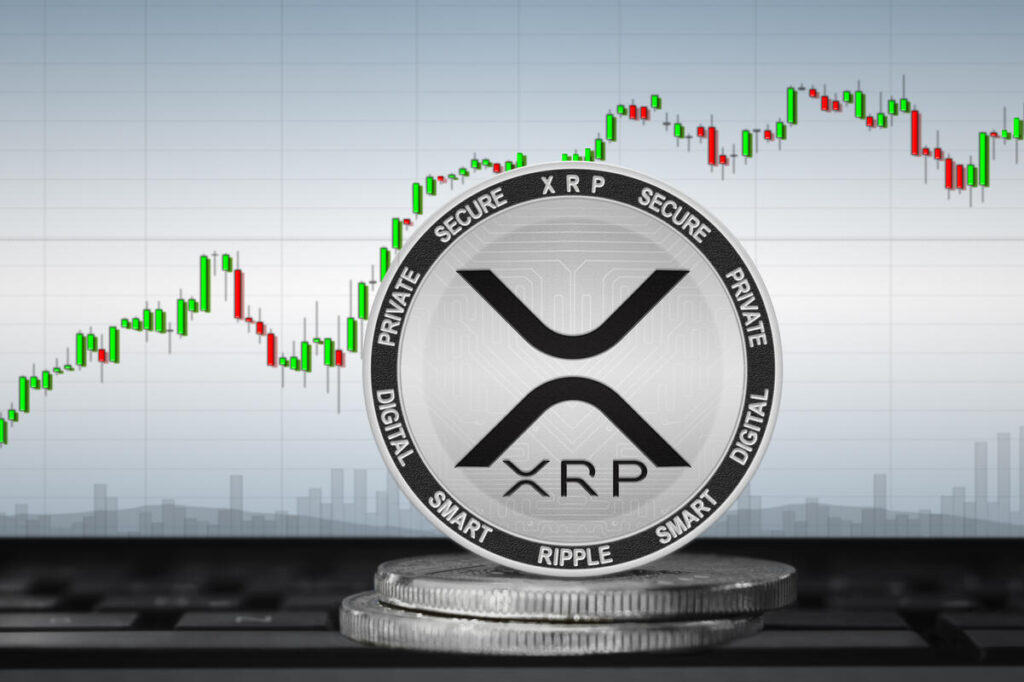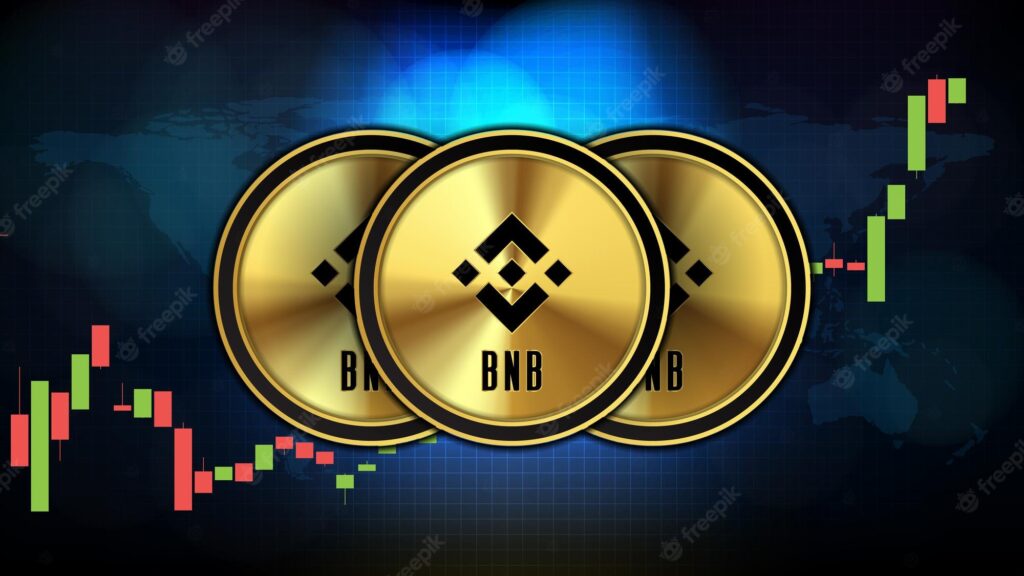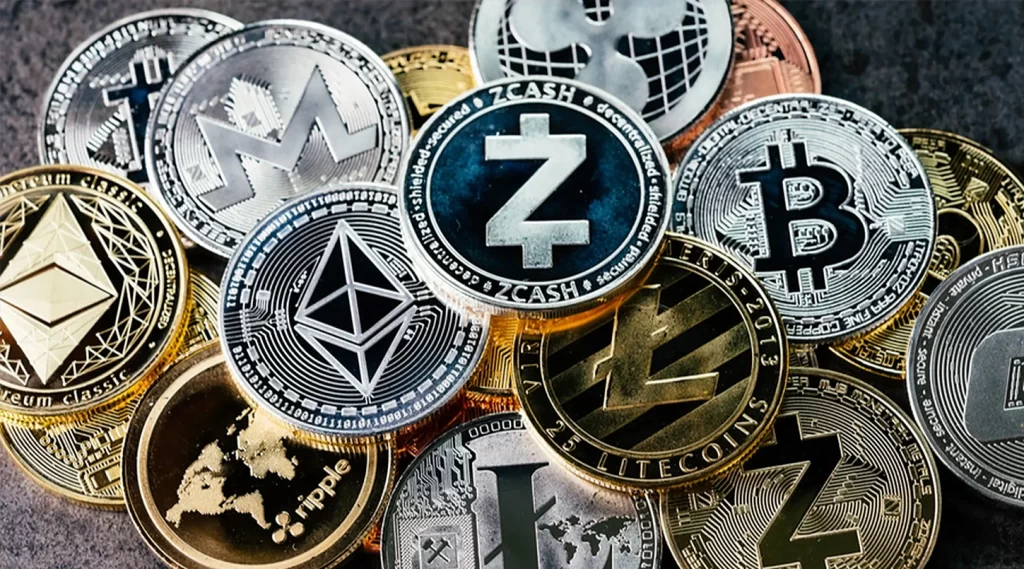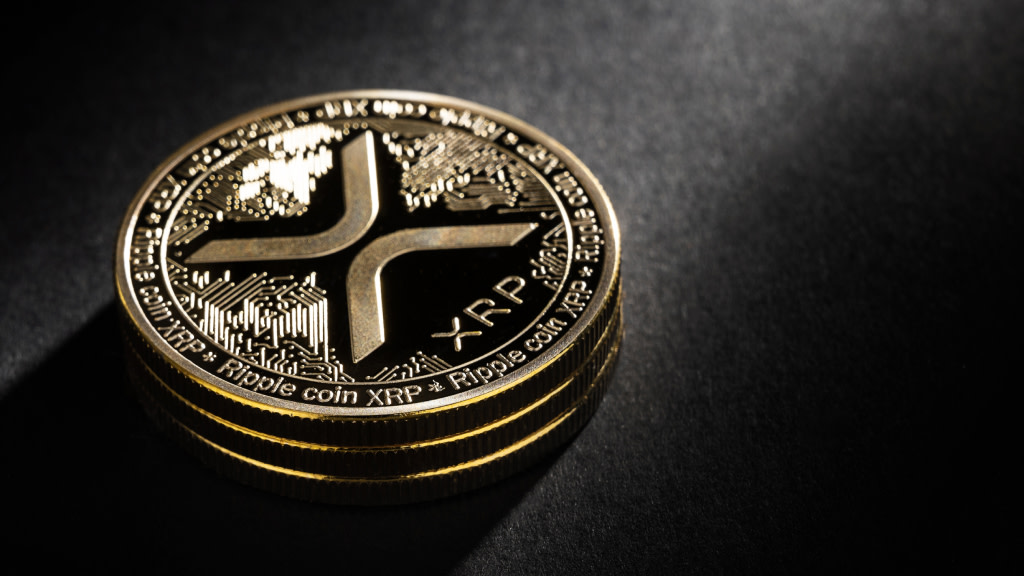Several counties in Arkansas, USA, are hastening to pass emergency legislation granting them control over noise and other activities associated with cryptocurrency mining before a new state law takes effect on August 1, according to local media reports.
The impending state law aims to subject crypto mining facilities to the same regulations applied to data centers, establishing guidelines for miners and safeguarding them from discriminatory regulations and taxes.
However, the residents of Arkansas had little time to discuss the proposed legislation, as it swiftly moved through committees and was passed by legislators in a mere week, from March 30 to April 7.
State Representative Rick McClure, the bill’s author, reportedly stated that there was no opposition to the bill during committee discussions or legislative sessions.
Several crypto mining companies, including Green Digital, GMI Computing, United BitEngine, and Cryptic Farms, operate within the state of Arkansas.
Local authorities are introducing additional rules in response to complaints about non-stop excessive noise generated by mining operations.
READ MORE: Report Reveals Alarming Surge in Cryptocurrency Use by ISIS Terrorists
Kris Kendrick, justice of the peace on Faulkner County’s Quorum Court, expressed concerns about the noise and its impact on the neighbors during a meeting in July.
He mentioned that he doesn’t object to crypto mining itself but is troubled by the lack of consideration for the community regarding the constant noise.
Following the bill’s passage, the Association of Arkansas Counties developed a model ordinance for counties to use until the law takes effect.
As a result, over a dozen counties have reportedly passed noise ordinances specifically targeting data centers.
Justice of the Peace Maree Coats highlighted the severity of the noise issue, emphasizing that affected residents are unable to find respite even in their own homes, as the noise persists 24/7.
Despite not entirely prohibiting county regulations, the new legislation bars local governments from discriminating against crypto mining facilities or imposing restrictions on decibel levels “other than the limits set for sound pollution generally.”
Additionally, counties are forbidden from rezoning areas with the intention or effect of discriminating against digital mining operations.
This rush to establish regulations comes amid the increasing prominence of cryptocurrency mining in Arkansas, prompting authorities to strike a balance between addressing legitimate concerns of noise and protecting the rights of mining companies within the state.
As the August 1 deadline approaches, these counties seek to be prepared for the new state law and its impact on crypto mining activities.
Other Stories:
2023 Ranking: 4 Best Crypto Projects To Buy
Controversial Proposal Sparks Fierce Debate Among Members of Solana-Based Liquidity Network
Terraform Labs Faces Uphill Battle Amidst Allegations, New CEO Discusses Road Ahead
Former FTX CEO, Sam Bankman-Fried, has accepted a gag order preventing him from making comments that could interfere with his trial, although he denies the allegations made by the U.S. government.
The request for the gag order was prompted by accusations that Bankman-Fried attempted to discredit a former business partner and witness, Caroline Ellison, in an interview with the New York Times, potentially impacting a fair trial.
Bankman-Fried’s legal firm, Cohen & Gresser LLP, has agreed to the gag order, but they argue that it should apply to all parties and witnesses involved in the criminal trial, not just their client.
They emphasize that the U.S. government and other potential witnesses should also be subject to the same restrictions.
According to the attorneys, there has been a “toxic media environment” surrounding their client, especially after the collapse of the cryptocurrency exchange FTX.
They point out that the current CEO of FTX Debtor entities, John J. Ray III, has been attacking Bankman-Fried in public comments and filings related to the FTX bankruptcy proceedings.
The lawyers argue that Ray’s ad hominem attacks have left Bankman-Fried with no choice but to respond.
The law firm asserts that the U.S. government is applying a double standard by promoting articles that harm Bankman-Fried’s reputation while seeking a gag order to prevent him from defending himself.
READ MORE: 2023 Ranking: 4 Best Crypto Projects To Buy
Therefore, they believe their request for the same gag order to be applied to all involved parties and witnesses is justified.
Bankman-Fried pleaded not guilty to a series of fraud charges related to his alleged role in the bankruptcy of FTX. The trial for these charges is set to begin on October 3.
In conclusion, Sam Bankman-Fried has agreed to a gag order as requested by the U.S. government to avoid potential interference with his trial.
However, his lawyers argue that other parties and witnesses, including the current FTX CEO, should also be subject to the same order due to the negative media environment surrounding their client.
The trial for Bankman-Fried’s fraud charges is scheduled to start on October 3.
Other Stories:
Controversial Proposal Sparks Fierce Debate Among Members of Solana-Based Liquidity Network
Terraform Labs Faces Uphill Battle Amidst Allegations, New CEO Discusses Road Ahead
Report Reveals Alarming Surge in Cryptocurrency Use by ISIS Terrorists
The Bitcoin network recently reached a significant milestone by mining its 800,000th block, leaving just 40,000 blocks remaining until the next mining reward halving.
The 800,000th block contained 3,721 transactions, occupying 1.64 megabytes of data. Concurrently, the price of Bitcoin was trading at $29,815, a slight decrease from $29,162, as reported by market researcher Dylan LeClair on Twitter.
The achievement garnered considerable attention on social media, with Bitcoin enthusiasts and industry experts touting it as a testament to the network’s security and resilience.
In the context of blockchain technology, the term “block height” refers to a block’s position on the blockchain concerning the number of blocks that came before it, dating back to the network’s founding block, known as the genesis block.
Each block comprises bundled transactions and data, forming a chronological order that allows users to track the sequence of recorded transactions.
Block height also plays a crucial role in ensuring the immutability of the Bitcoin blockchain. As more blocks are added, the computational power required for a malicious actor to tamper with previous blocks significantly increases.
This helps prevent 50% attacks, where an attacker gains enough computing power to monopolize block generation, enabling them to reverse transactions and disrupt the network.
Moreover, block height affects the mining difficulty of the Bitcoin network.
READ MORE: Report Reveals Alarming Surge in Cryptocurrency Use by ISIS Terrorists
The mining difficulty is adjusted regularly based on the total computational power of the network and the time it takes to mine a specific number of previous blocks.
Since the network generates a new block approximately every 10 minutes, any changes in hashing power result in automatic adjustments to maintain equilibrium.
Furthermore, block height determines the rewards received by miners for adding a new block to the network. Bitcoin’s design includes a block-halving event roughly every four years or every 210,000 blocks.
Initially, the block reward was 50 BTC in 2009, which halved to 25 BTC in 2012, 12.5 BTC in 2016, and presently stands at 6.25 BTC since 2020.
The next halving event is anticipated to occur in April 2024, resulting in a reduced block reward of 3.125 BTC.
Past halving events have historically coincided with significant price rallies for Bitcoin and the broader cryptocurrency market.
As the countdown to the next halving event begins, macroeconomic factors have influenced the price of BTC, particularly following its all-time high of $69,000 in 2021.
Analysts and commentators have interpreted recent Bitcoin exchange-traded fund filings by global asset managers BlackRock and Fidelity as a sign of renewed institutional interest in Bitcoin.
These developments continue to shape the cryptocurrency’s trajectory as it moves closer to another crucial halving event.
Other Stories:
Controversial Proposal Sparks Fierce Debate Among Members of Solana-Based Liquidity Network
2023 Ranking: 4 Best Crypto Projects To Buy
Terraform Labs Faces Uphill Battle Amidst Allegations, New CEO Discusses Road Ahead
With there being thousands of crypto projects to choose from, it can be difficult to determine which are the best to invest in.
To make matters even more complicated and precarious, an alarmingly high percentage of crypto projects end up being abandoned by their developers – or even turn out to be rugpulls.
In this review, we rank the best crypto projects to invest in, as of 2023.
1. Ripple (XRP)
Ripple and XRP are two major concepts in the cryptocurrency sector that are intricately linked yet fundamentally different. Understanding their distinction and the impact they’ve had on the global financial system requires a deeper dive into each of their functionalities.
Ripple is the name of a technology company based in San Francisco, founded in 2012, that focuses on the development of payment and real-time gross settlement system technology.
The primary aim of Ripple is to streamline the process of cross-border transactions, which are typically expensive and time-consuming with traditional banking systems.
The solution Ripple proposes is RippleNet, a global payments network that leverages distributed ledger technology to enable financial institutions to transact with one another directly and in real-time.
RippleNet is designed to be a network of institutional payment providers, such as banks and money services businesses, that use solutions developed by Ripple to provide a seamless experience to send money globally.
Ripple’s most known products include xCurrent and xRapid. xCurrent allows banks to settle cross-border payments with end-to-end tracking, while xRapid uses XRP, Ripple’s digital currency, to enable liquidity for banks and reduce the costs of cross-border transactions.
Which brings us to XRP. XRP is a digital asset and cryptocurrency that was created by Ripple. It plays a dual role as both a cryptocurrency and a technology protocol for facilitating cross-border transactions.
XRP as a cryptocurrency is used primarily as a bridge currency for transferring value between different fiat currencies on the Ripple network.

As of Ripple’s design, a total of 100 billion XRP tokens were created, and no more will be produced. This deflationary nature sets XRP apart from cryptocurrencies like Bitcoin, which are inflationary with new coins being mined over time.
XRP transactions are confirmed by consensus among Ripple’s network members, rather than proof-of-work or proof-of-stake mechanisms, which contributes to its speed.
It’s this feature that allows XRP to process transactions significantly faster and more efficiently than many other cryptocurrencies.
The utility of XRP is best demonstrated in Ripple’s product, xRapid. Financial institutions using xRapid for cross-border payments first convert the currency into XRP, then send the XRP to the receiving institution where it’s converted into the desired currency.
This process reduces the cost and time required for such transactions as it eliminates the need for pre-funded nostro accounts.
However, Ripple and XRP have not been without controversy. Ripple Labs, the company, has faced legal challenges, notably from the Securities and Exchange Commission (SEC) in the United States, which claims that XRP is a security and not a cryptocurrency, thus it should have been registered as such.
This ongoing lawsuit has cast a shadow over XRP, causing some cryptocurrency exchanges to delist it until there’s clarity about its legal status.
Despite the challenges, Ripple and XRP have made a significant impact on the global financial system. Many financial institutions are already using or experimenting with Ripple’s technology to improve their cross-border payment systems.
This is testament to the transformative potential of Ripple’s technology and the utility of XRP as a bridge currency in international transactions.
All things considered, Ripple as a company and XRP as a digital asset have marked a new era in the financial world.
The mission to revolutionize global money transfers by providing an alternative, fast, and low-cost method is the driving force behind Ripple. XRP, as a key component of this mission, provides the liquidity necessary for such a system to operate efficiently.
As the legal battles and the cryptocurrency market evolve, the path ahead for Ripple and XRP will undoubtedly be worth watching. The technology and ideas they represent could shape the future of global finance.
Key Facts:
- Market capitalization of $40.5 billion
- Circulating supply of 52.5 billion XRP
- Current price of $0.7705
2. Chainlink (LINK)
Chainlink is a leading decentralized oracle network that is playing a significant role in the evolution of blockchain technology. It addresses the need for external data in blockchain-based smart contracts and broadens the possible scope of applications within the blockchain sphere.
To understand the value Chainlink brings to the table, it’s necessary to comprehend its core functions and benefits in a blockchain context.
At the heart of Chainlink’s operations is the smart contract. A smart contract is a self-executing contract with the terms of agreement between parties being directly written into lines of code.
It automates transactions without requiring an intermediary, reducing costs and inefficiencies. However, these smart contracts can’t interact with data outside their network. This is where Chainlink comes in.
Chainlink serves as a bridge between smart contracts and the real world. It uses a network of decentralized oracle nodes to collect and verify real-world data before feeding it into a blockchain. Oracles are the agents that find and verify real-world occurrences and submit this information to a blockchain to be used in smart contracts.
The decentralized nature of Chainlink’s network of oracles ensures a high level of security and reliability, reducing the risk of any single point of failure.
Chainlink’s native cryptocurrency, LINK, serves a specific function within this ecosystem. It’s used to pay node operators in the network for their services in retrieving data, converting data into blockchain readable formats, and increasing the reliability of the data.
Additionally, it’s also used as a staking token by the node operators as a form of collateral to ensure reliable, honest service.
Chainlink isn’t just about bringing external data into blockchains; it’s also about ensuring the data’s reliability. Chainlink’s decentralized oracle network incentivizes honest reporting and penalizes dishonest behavior.
If a Chainlink node operator provides inaccurate information, they risk losing their staked LINK tokens. This mechanism ensures the accuracy and reliability of data being fed into the smart contracts, a critical requirement in many industries.
Furthermore, Chainlink’s flexibility makes it blockchain agnostic. This means it can serve multiple blockchains, not just one, making it a universal adapter for all blockchains. This unique feature makes Chainlink an integral part of the blockchain ecosystem, providing vital interoperability functions.
Since its launch in 2017, Chainlink has been embraced by numerous projects in the cryptocurrency space, from DeFi platforms to large-scale enterprise solutions.
Chainlink’s ability to secure and reliably connect smart contracts with high-quality data sources opens up new possibilities for blockchain applications, enhancing their utility and practicality in real-world scenarios.
The scope of Chainlink extends beyond financial applications. It has the potential to impact multiple sectors, including insurance, supply chain, gaming, and more.
For instance, in the insurance industry, a smart contract could automatically pay out claims when a certain event happens, like a flight delay. Chainlink would provide the real-time flight data to the smart contract, enabling this automatic payout to happen.
By serving as a reliable bridge between the blockchain and the real world, Chainlink allows smart contracts to interact with real-world data, opening up endless possibilities for blockchain applications.
Its unique position in the market, combined with its robust decentralized oracle network, has positioned Chainlink as a leading player in the blockchain industry.
With an ever-growing ecosystem of projects utilizing its technology, Chainlink is undoubtedly one of the best crypto projects to invest in, in 2023.
Key Facts:
- Market cap of $4.3 billion
- Circulating supply of 538 million LINK
- Current price of $8.01
3. Cardano (ADA)
Cardano is an open-source, decentralized blockchain platform founded by Ethereum co-founder Charles Hoskinson and developed by the company IOHK. Launched in 2017, Cardano aims to be the world’s financial operating system by establishing decentralized financial products similarly to Ethereum, but with a robust focus on security, scalability, and sustainability.
The platform has garnered attention for its unique layered architecture and its commitment to peer-reviewed scientific research as building blocks for updates and modifications.
Cardano’s architecture consists of two layers: the Cardano Settlement Layer (CSL) and the Cardano Computation Layer (CCL). The CSL manages the cryptocurrency ADA and handles transactions, while the CCL is responsible for running smart contracts and decentralized applications (dApps).
This layered structure is one of Cardano’s defining features, separating the ledger of account values from the reason why values are moved from one account to the other. This provides more flexibility in the design and execution of smart contracts, enhancing security and performance.
At the heart of Cardano is its native cryptocurrency, ADA, named after Ada Lovelace, a 19th-century mathematician who is recognized as the first computer programmer. ADA is used for staking, transaction fees, and will eventually be used to power smart contracts and dApps on the Cardano platform.
Unlike Ethereum, which uses Proof-of-Work consensus mechanism, Cardano uses a unique Proof-of-Stake algorithm called Ouroboros. Ouroboros aims to be more energy-efficient and democratic than Proof-of-Work.
In Cardano’s Ouroboros, “epoch” time is divided into slots, and slot leaders are chosen randomly from the pool of ADA holders who are staking their coins. These slot leaders validate transactions and add them to the blockchain.
Cardano’s approach to development sets it apart from many other cryptocurrencies. The platform places a heavy emphasis on academic research, with many of its protocols being academically peer-reviewed. This careful, considered approach is designed to ensure the robustness and security of the platform, but it also means that development can be slower than some other cryptocurrencies.
Another key difference is Cardano’s philosophy towards decentralization. It has a strong community governance model where future development and changes to the platform are voted on by the community of ADA holders. This is designed to prevent a split in the community or a “hard fork.”
In terms of real-world use cases, Cardano is exploring a range of applications. These include the creation of verifiable credentials for academic certificates on its blockchain and exploring ways to provide banking services to those in developing countries who lack access to traditional banking infrastructure.
Cardano also aims to make a difference in the decentralized finance (DeFi) sector. With the introduction of smart contracts on its platform, Cardano aims to create secure and scalable DeFi applications that can potentially outperform existing options on networks like Ethereum.
However, like any cryptocurrency, Cardano is not without risks. The platform is still in development, and its ambitious roadmap has several stages yet to be completed. There is always the risk that Cardano’s promises won’t come to fruition or that the platform won’t gain the widespread adoption it aims for.
Key Facts:
- Market capitalization of $10.9 billion
- Circulating supply of 34.9 billion ADA
- Current price of $0.3118
4. Binance Coin (BNB)
Binance Coin, also known as BNB, is the native cryptocurrency of the Binance exchange, one of the world’s largest and most popular cryptocurrency exchanges.
Founded in 2017, Binance and its native coin BNB have been at the forefront of the cryptocurrency industry’s growth and adoption, demonstrating a unique approach to leveraging blockchain technology in the digital finance realm.
BNB was originally launched as an ERC-20 token on the Ethereum blockchain during an Initial Coin Offering (ICO) in July 2017.
The coin was created to raise funds for the development of the Binance exchange. Later, in 2019, Binance launched its own blockchain, Binance Smart Chain (BSC), and moved BNB off the Ethereum network onto BSC.
There are several utilities for BNB in the Binance ecosystem. It can be used to pay for trading fees on the platform, participate in token sales on the Binance Launchpad, and more.
One of the most notable benefits of using BNB is that Binance offers users a significant discount on trading fees if they are paid with the token.
The functionality of BNB extends beyond the Binance exchange. With the launch of Binance Smart Chain, BNB has become instrumental in a range of decentralized applications (dApps). BNB is used for transaction fees on the BSC, much like how Ether is used for transaction fees on Ethereum.
The low fees and high performance of BSC have made it popular among developers and users, which in turn has driven further usage and demand for BNB.

Additionally, BNB is used for staking on the Binance Smart Chain. Staking involves participating in the network by holding and pledging a cryptocurrency in a wallet to support the operations of a blockchain network. This process helps to secure the network and process transactions, and in return, stakers can earn rewards.
Another significant aspect of BNB is the coin burn mechanism, a deflationary action designed to control the number of tokens in circulation and, theoretically, increase the token’s value over time. Binance commits to using 20% of its profits each quarter to buy back and burn BNB until 50% of the total supply (100 million BNB) is destroyed.
BNB has also been embraced by other platforms outside of Binance. It’s often used as a utility token on multiple platforms and services, including loan collateral, payment for transaction fees, and more. This widespread adoption has significantly increased the utility and demand for BNB, contributing to its value growth.
Despite these positives, BNB, like any cryptocurrency, comes with its risks. It’s tied closely to the fortunes of the Binance exchange, meaning any regulatory issues or other significant events impacting Binance could affect BNB. Additionally, the cryptocurrency market’s inherent volatility also applies to BNB.
Key Facts:
- Market cap of $37.3 billion
- Circulating supply of 153.8 million BNB
- Current price of $242.39
Disclaimer: None of the information contained within this article is financial advice.
On July 20, Reuters reported that a hacking group backed by the North Korean government successfully infiltrated an American IT management company, JumpCloud, and exploited it as a launching point to target cryptocurrency companies.
JumpCloud, based in Louisville, Colorado, disclosed the breach in a blog post, stating that the hackers gained unauthorized access to their systems in late June. The attackers then focused their efforts on fewer than five of JumpCloud’s clients.
Though JumpCloud did not reveal the affected customers’ identities, cybersecurity companies CrowdStrike Holdings and Mandiant, who are assisting JumpCloud and one of its clients, respectively, confirmed that the hackers were known for their interest in cryptocurrency theft.
Notably, the specific targets of the attack were cryptocurrency companies, according to individuals familiar with the matter.
This incident underscores the evolving tactics of North Korean cyber spies, who have shifted from targeting digital currency firms one by one to adopting a “supply chain attack” strategy.
By exploiting a company like JumpCloud, which provides services to multiple clients, the hackers gained access to multiple potential victims downstream.
CrowdStrike identified the hacking group responsible as “Labyrinth Chollima,” which is just one of several groups believed to operate on behalf of North Korea.
On the other hand, Mandiant attributed the attackers to North Korea’s Reconnaissance General Bureau (RGB), the primary foreign intelligence agency.
The cyber intrusion into JumpCloud was first brought to public attention when the company sent emails to its customers, warning them of a credential change due to an ongoing incident.
READ MORE: OpenAI Unveils Android Version of ChatGPT
It’s worth noting that North Korea’s involvement as a suspect in the hack was previously suggested by the cybersecurity-focused podcast, Risky Business.
Labyrinth Chollima, known for being one of North Korea’s most active hacking groups, has been responsible for audacious and disruptive cyber intrusions.
In particular, their cryptocurrency thefts have resulted in significant financial losses, with an estimated $1.7 billion worth of digital cash stolen across multiple hacks, as reported by Blockchain analytics firm Chainalysis.
Cybersecurity experts and firms like SentinelOne share concerns that North Korean supply chain attacks will likely continue.
The hackers’ ability to evolve their techniques and target entities with access to numerous potential victims poses an ongoing challenge for the cybersecurity community.
Despite the mounting evidence, North Korea’s mission to the United Nations in New York has not responded to requests for comment.
The country has consistently denied any involvement in digital currency heists, even in the face of compelling evidence, including United Nations reports confirming their activities.
As the sophistication and audacity of North Korean hackers continue to grow, the cybersecurity landscape must remain vigilant to combat their persistent and evolving threats.
Other Stories:
SEC Contemplates Appeal Over Controversial XRP Ruling
Nigerian Social Payments App Bundle Ceases Crypto Exchange Services
Bitcoin Laundering Couple Reach Plea Agreement with U.S. Authorities
Britain’s Financial Services Minister, Andrew Griffith, has rejected the idea of treating cryptoassets as a form of gambling.
He argues that such a classification would not only put Britain at odds with global and EU regulators but also fail to address the risks posed by the crypto sector.
In a report released in May, Parliament’s Treasury Select Committee suggested that cryptocurrencies like bitcoin and ether should be regulated as gambling due to the significant risks they pose to consumers.
However, Griffith firmly disagrees with this recommendation, asserting that it could lead consumers to mistakenly believe that investing in crypto is safer than it actually is.
UK regulators have been warning investors about the potential to lose all their money in the volatile crypto market.
The UK government has ambitious plans to establish itself as a global hub for cryptocurrencies and blockchain technology.
Nevertheless, Griffith maintains that regulating cryptoassets as gambling would not be an appropriate solution to ensure the safety and stability of the sector.
Moreover, such an approach would contradict internationally agreed-upon recommendations from standard-setting bodies like the International Organization of Securities Commissions (IOSCO) and the G20 Financial Stability Board (FSB).
READ MORE: Nigerian Social Payments App Bundle Ceases Crypto Exchange Services
Both organizations have been actively working on establishing standards for the crypto sector, with IOSCO having proposed the world’s first set of rules for cryptocurrencies in May.
Griffith emphasizes that adopting a gambling regulation model would also risk creating confusion and overlapping mandates between financial regulators and the Gambling Commission.
This misalignment could hinder the growth and development of the crypto industry in the UK.
The European Union has already approved a comprehensive set of rules for trading cryptoassets, scheduled to take effect in mid-2024.
However, buying or selling cryptocurrencies is not currently classified as gambling under the UK’s Gambling Act.
The UK’s gambling watchdog previously investigated a fantasy sports company called Sorare, which uses cryptocurrency for buying and selling non-fungible tokens (NFTs) representing sports stars.
The investigation aimed to determine whether the game amounted to gambling.
Looking ahead, Britain is working on regulations for stablecoins, a type of cryptocurrency backed by underlying assets to maintain a stable value.
These regulations will differentiate stablecoins from the more volatile “unbacked” cryptocurrencies like bitcoin and ether.
In conclusion, the debate over how to regulate cryptoassets continues in the UK, with the government aiming to strike a balance between fostering innovation in the sector and protecting consumers from potential risks.
Other Stories:
OpenAI Unveils Android Version of ChatGPT
Bitcoin Laundering Couple Reach Plea Agreement with U.S. Authorities
On July 20, a British court granted an appeal to Craig Wright, allowing him the opportunity to argue that the Bitcoin file format deserves copyright protection. Since 2016, Wright has asserted that he is the original creator of Bitcoin, using the pseudonym Satoshi Nakamoto.
In his legal action, Wright filed a lawsuit against 13 Bitcoin Core developers and several companies, including Blockstream, Coinbase, and Block, alleging that they infringed on his copyright to the Bitcoin white paper, the file format, and database rights associated with the Bitcoin blockchain.
This recent court decision comes as a reversal of a previous ruling from February, which deemed Wright’s arguments insufficient to demonstrate the initial recording, or fixation, of the Bitcoin file format, a crucial concept in copyright law.
Wright’s tweet on July 20 emphasized the importance of protecting intellectual property to support creators and innovators, encouraging the generation of new ideas and creative works, although he didn’t explicitly mention the court’s decision.
The legal representation for the developers, the Bitcoin Legal Defense Fund (BLDF), countered Wright’s claims by arguing that he has failed to provide any evidence supporting his assertion of being Satoshi Nakamoto.
READ MORE: Vermont Department of Financial Regulation Issues Stark Crypto Warning
BLDF stated that Wright must first prove his identity as Nakamoto before the court can proceed with the primary claims of the lawsuit. The trial is anticipated to take place in early 2024.
One significant point of contention in the case is that the Bitcoin code is open-source and distributed freely under the Massachusetts Institute of Technology license.
This means that users have the right to reuse the code for any purpose, including in proprietary software.
However, Wright argues that the Bitcoin Core developers act as a centralized entity, referred to as the “Bitcoin Partnership,” which allegedly controls the Bitcoin network.
BLDF expressed concern over the court’s decision to hear Wright’s arguments, as they believe it sets a dangerous precedent not only for the crypto community but for the entire world.
Allowing developers to be sued for purportedly violating the file format of open-source software claimed by someone else could have far-reaching implications for the software development industry.
As the legal battle continues, the outcome of this case could have significant ramifications for the protection of intellectual property rights in the realm of open-source software and the broader cryptocurrency community.
Other Stories:
2023 Ranking: 4 Best Crypto Projects To Invest In
China’s Digital Yuan Soars: Business Travelers Can Now Pay for Flights with CBDC
XRP’s price experienced an astonishing 100% surge on the same day as the landmark ruling in the XRP securities case, where Judge Analisa Torres of the United States District Court for the Southern District of New York declared that XRP sales to retail investors do not classify the token as a security in the SEC’s case against Ripple.
This ruling reignited trading interest in XRP, leading to a surge in open interest volume for XRP futures contracts, which reached a high of $1.19 billion on July 20, the highest point since November 2021.
The surge in trading interest and the relisting of XRP on prominent U.S.-based exchanges, such as Gemini and Coinbase, boosted market sentiment.
However, despite the positive developments, network growth for XRP has not seen a corresponding increase.
The number of transactions on the XRP Ledger has remained steady for over a year, indicating a lack of new entities actively participating in the network.
Ripple, following its partial victory in the lawsuit, is striving to boost adoption of the XRP Ledger.
The company has invested $54 million in a metaverse project called Futureverse and plans to rebuild its relationships with banks, aiming to facilitate low-cost global payments.
READ MORE: China’s Digital Yuan Soars: Business Travelers Can Now Pay for Flights with CBDC
These initiatives are expected to promote network growth and serve as positive catalysts for the market.
From a technical perspective, the XRP/USD pair faces resistance from a long-term bearish trendline dating back to the 2018 peak.
A weekly close above this level could strengthen investor sentiment and potentially mark the end of the bearish trend.
However, if buyers fail to sustain the bullish momentum, XRP/USD might revisit support around $0.54 before making another upward move.
Similarly, the XRP/BTC pair is also encountering resistance between 0.00002533 BTC and 0.00003341 BTC, a level that has proven challenging to breach since 2019.
Failure to establish support above this level could lead the pair back to support around 0.00001555 BTC.
Despite the positive regulatory developments and technical progress, there are indications of potential short-term pullbacks due to the significant volatility exhibited by XRP, given its futures open interest reaching over $1 billion.
The funding rate for perpetual swaps has trended positively since the court ruling, suggesting an increase in long positions, which raises the possibility of a correction to liquidate overleveraged buyers.
However, considering the positive regulatory landscape, technical advancements, and the token’s popularity among retail users, it is plausible that XRP’s long-term negative trend may conclude in the coming weeks with the advent of positive catalysts related to mainstream adoption of XRP.
Other Stories:
Vermont Department of Financial Regulation Issues Stark Crypto Warning
The United States Department of Justice (DoJ) recently filed a complaint against Sam Bankman-Fried (SBF), the founder of FTX, alleging that he leaked private documents belonging to Caroline Ellison, who was previously both his business ally and romantic partner.
According to the complaint filed on July 20, the DoJ claims that Bankman-Fried attempted to interfere with a fair trial by publicly discrediting Ellison, who had become a government witness in SBF’s case in late 2022.
The accusation is based on Bankman-Fried’s act of sharing Ellison’s personal writings with a reporter, resulting in the publication of an article by The New York Times on July 20.
The U.S. Attorney Damian Williams argued that SBF aimed to discredit the government witness by featuring her private documents in the article.
The DoJ does not explicitly name the source of the leaked documents in the article, but Williams asserts that it is apparent that Bankman-Fried was responsible for sharing them.
Defense counsel confirmed that SBF had met with one of the article’s authors in person and provided documents that were not part of the government’s discovery material.
Williams highlights that these documents seem to have originated from Bankman-Fried’s personal Google Drive account and were not part of the case’s discovery materials.
He emphasizes that releasing non-public information that could interfere with a fair trial is prohibited by U.S. federal rules of civil procedure.
The government requests the court to enter an order, pursuant to Local Rule 23.1, which prohibits extrajudicial statements by parties and witnesses likely to affect the right to a fair trial by an impartial jury.
Williams stresses that having the article published in a reputable newspaper without identifying the defendant as the source misleads readers and compounds the risk of tainting prospective jurors.
As of now, both the DoJ and SBF’s defense attorneys have not responded to media inquiries about the complaint.
FTX, once a major global cryptocurrency exchange, experienced a collapse in mid-November 2022, possibly due to the liquidity crisis of the company’s FTT token and the 2022 bear market.
The link between FTX and Alameda was also cited as a contributing factor to the collapse.
Following the implosion of his crypto empire, Bankman-Fried faced seven lawsuits by early December 2022.
He is scheduled to appear in court on October 2 to address multiple charges, including fraud, illegal political donations, and bribes to the Chinese government.
Other Stories:
Why You Should Be Bullish Despite Bitcoin Price Falling Below $30,000
Bitcoin Mining Companies Employ Derisking Strategies, Offload BTC to Exchanges
Robert F. Kennedy Jr. Pledges to Back US Dollar with Bitcoin if Elected President
Web3 crime is undergoing a significant shift away from Bitcoin (BTC) towards stablecoins, and Ponzi schemes continue to plague the cryptocurrency landscape, according to Tara Annison, former head of technical crypto advisory at Elliptic.
During her presentation at EthCC in Paris, Annison shed light on the various ways digital assets are being exploited for criminal activities or money laundering.
Drawing insights from Elliptic, Chainalysis, and TRM Labs, Annison, as a former Elliptic employee, emphasized that the days of Bitcoin being the go-to choice for illicit activities are over.
As the crypto industry has matured, decentralized finance protocols, mixing services, and stablecoins have opened up new opportunities for criminals.
Dollar-denominated assets like USD Coin (USDC) have become the preferred choice due to their ease of access and potential to be laundered through decentralized exchanges (DEXs).
Criminals target these assets because of their deep liquidity and substantial volume, making it relatively easy to obscure their activities.
However, Annison pointed out a potential positive aspect for law enforcement, noting that centralized issuers like Circle can freeze specific USDC tokens before criminals can convert them to fiat through DEXs or centralized exchanges, effectively blocking their access to the funds.
Ponzi and pyramid schemes continue to be a problem in the sector, with criminals having stolen a staggering $7.8 billion from unsuspecting victims through these scams.
Moreover, criminals have become more sophisticated in their money laundering techniques, resorting to chain swapping and asset swapping to evade detection by blockchain analytics firms, amounting to around $4.1 billion in laundered funds.
Interestingly, despite the prevalence of scams, the sector has seen a decline of 46% in scam-related activities compared to previous years.
Annison attributes this to the ongoing bear market, which has made the sector less attractive for cybercriminals due to decreased hype and lower cryptocurrency prices.
Annison also brought attention to the increasing misuse of cryptocurrencies to evade sanctions and finance terrorist activities, highlighting popular assets like TRON (TRX) and Tether (USDT) being used for illicit purposes.
The rise of metaverse experiences has also attracted criminal actors, with various crimes emerging in virtual worlds, including phishing attacks, non-fungible token theft, wallet tampering, and augmented reality hacks.
In conclusion, Annison’s presentation highlighted the reality of criminal activity in the Web3 sector, signaling the need for heightened security measures to protect users and combat illicit activities effectively.
As the landscape continues to evolve, staying vigilant and implementing robust security protocols will be crucial in safeguarding the digital asset ecosystem.
Other Stories:
Why You Should Be Bullish Despite Bitcoin Price Falling Below $30,000
Bitcoin Mining Companies Employ Derisking Strategies, Offload BTC to Exchanges
Robert F. Kennedy Jr. Pledges to Back US Dollar with Bitcoin if Elected President











